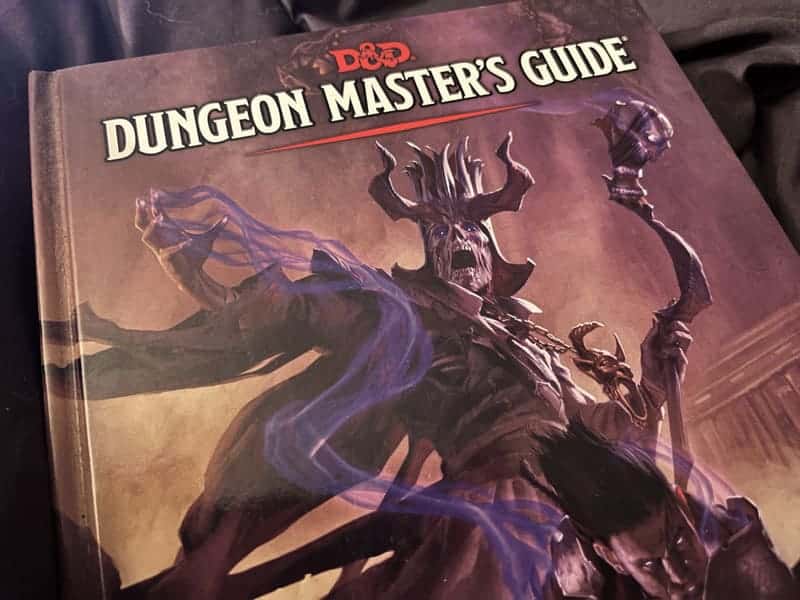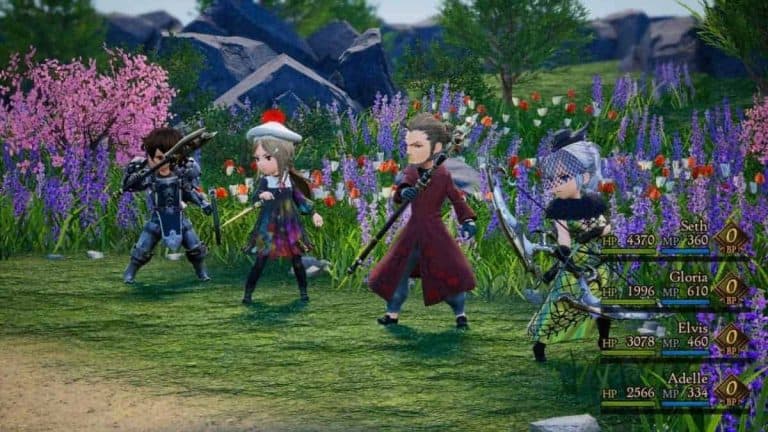Pathfinder 2e: How it Compares to the Legendary DnD 5e
Pathfinder is a tabletop role-playing game released by Paizo in 2009. It is based on a revised edition of Dungeons and Dragons 3rd edition, which my circle of friends lovingly refers to as Dungeons and Dragons 3.5 edition. Pathfinder is known for its extensive feat tables, spell lists, and often complicated rules, which led to many people switching to Dungeons and Dragons 5e due to its streamlined gameplay.
In 2019, Paizo released Pathfinder 2e as its first original release. It featured a more streamlined gameplay style and introduced extensive changes to the first edition. It’s been out for a few years and now seems like the perfect time to dive into how Pathfinder 2e and Dungeons and Dragons 5e compare.
Character Creation
When Pathfinder was first released, it was meant to be backward compatible with the 3rd edition of DnD. This made it easy to jump from one system to the other. This edition, however, takes a dramatic left turn right off the bat. Character Creation, at first, can be a little intimidating, but this new system can really speed up the process. Let me explain.
Character creation in the 2nd edition is done organically by using your character’s background and race to determine what stat increases you get. In 5e, you roll 4 d6 and take the higher 3, and that’s your baseline. Your race can also determine what other bonuses or negatives you get in a certain stat, but for the most part, it is the same system we’re familiar with. It differs from a roleplaying perspective as your character has goals, character flaws, and other traits, and personally, I feel that limits your roleplaying and storylines.
2e, however, takes character creation and flips it on its head. While Paizo did include rules for rolling your stats, race, class, feats, and background are the primary ways to determine your character’s stats. We’ll go over these in more detail soon, but I must note how weird this felt the first time I did this. I felt like I was playing Pathfinder for the first time and was overwhelmed by the newness of it. I promise you, it’s not so bad, so let’s go over a sample build.
The first thing you need to know is that all of your stats start off with a baseline of 10. So strength, dexterity, constitution, intelligence, wisdom, and charisma all start off with a 10 or a 0 ability score. So, let’s remake my favorite Pathfinder character, Minsc, who is a fighter.
To start, we chose a variant human for an extra feat and two stats to boost. We’re going to choose Die Hard for our feat and boost our strength and constitution. Once we do this, strength and constitution will now have a +1. Then, for our background, we’re choosing Harbor Guard, which also allows us to boost constitution and strength. Now that we’ve chosen fighter, we can choose four stats to boost: strength, constitution, dexterity, and wisdom. With all of that in, our stat block is going to look like this: str (+4), dex (+1), con (+3), wis (+1), int (0), and cha (0).
Just like that, we have our class, stats, feats, and skills to train in. Each class, race, and background can drastically change how your character is built so it’s a good idea to have an idea in your head before you start. The next thing we should look at is how skill checks work.
Skills
Skills are an essential part of playing D&D and Pathfinder, and we’ve found that these two publishers don’t stray too far off the beaten path. Skills largely work the same way in both games, but the ways you can use them are a little different.
I tip my hat to 5e here, as I think they have the best system so far. You don’t have to worry about skill points; once you set your skills, that’s it, unless you use a feat or multiclass. 5e also has this fantastic system called disadvantage or advantage based on the circumstances of the skill use. Advantage allows you to roll 2 dice and take the larger value, whereas at a disadvantage is the exact opposite.
Your chosen skills increase as your proficiency bonus increases, making leveling up much faster. The older 3.5e and Pathfinder have skill points per level you have to calculate and then divvy up. Perception was, by far, the most used and broken skill to have and it can really make or break a campaign. Pathfinder 2e works a little differently, but it’s not as drastic as its character creation.
In 2e, there is no option to select perception; everyone gets some sort of training in perception. Your perception is based on your wisdom modifier along with your proficiency bonus. In our sample build, Fighters get expert proficiency in perception, meaning they get +3 on top of your wisdom modifier. How proficiency is calculated is a bit different.
Skills can be used untrained unless they need training by anyone, and they get no bonus. Once you start gaining proficiency in those skills, you go from untrained to trained, expert, master, and legendary. These bonuses increase by 2, 4, 6, or 8 respectively. So, our fighter at level 1 is an expert in perception with a 1 modifier in wisdom. This means that your score is a 6. Your proficiency bonus is equal to how trained you are (expert is +4) plus your level (level 1) and then you add your ability modifier (wisdom +1).
Combat
Most of you have this question; I know it was mine when I first picked this up. Combat in these two games is pretty different. In 5e, when an encounter begins, everyone rolls initiative, takes their actions, and then ends their turn. Every character, unless you have an effect or use certain class abilities, gets a standard, move, and bonus action during combat. Once you’ve run out of actions, your turn comes to an end. You repeat this until combat ends.
In Pathfinder, things were more complicated. You had touch AC, Flat-footed AC, and standard AC. You still have a standard action and movement but no bonus actions. 2e changed the formula quite a bit. Now you just have the standard AC, and initiative is gone. Initiative is now replaced with a perception roll at the start of combat to determine the order. Now you get 3 actions with certain actions using more actions than others. While swinging your sword is quick and easy, a spell with a minute cast time will take several dozen actions.
Time for the biggest differences between the two, and it is one that players try to avoid. Character deaths happen, it’s a fact of the game, but how each game handles this is vastly different. In 5e, when you hit 0 HP, you fall unconscious and must make three to six saving throws to either stabilize or die. You either save or die when you fail or succeed three times. Or you can instantly save if you’re healed.
In 2e, you fall unconscious when you hit 0 HP; a successful check means you stop dying but gain the wounded condition. However, if you still take damage or fail your checks, you will be added a point or two to your status. Once that check hits 4 (or 5 with Die Hard), you’re considered dead. As far as dying mechanics go, I’ll give Pathfinder 2e an advantage here. While it’s still not as lenient as the first edition, where you’re considered dead after you reach a certain negative HP, this isn’t too bad.
Pathfinder 2e or D&D 5e?
Both systems are fantastic to play. While I still prefer the first edition Pathfinder to both 5e and 2e, that preference comes down to experience. I have had decades of experience in both Pathfinder and D&D 3.5, and while they have their issues with complexity, they are also very accessible.
I do have to tip my hat to Paizo here. The biggest issue I had with 5e is its accessability. Both Pathfinder and Pathfinder 2e have free-to-use SRD websites you can use. While 5e does have some websites you can find information from, it’s not nearly as complete. The best way to get information for 5e is to buy the books and expansions.
While that isn’t a bad thing, you should support mediums you enjoy; not everyone is going to be able to buy your stuff. I will have to give props to 5e for its software support: they have one of the best character generators on the market with D&D Beyond—although technically, that’s a 3rd party app. You can use D&D Beyond, but to use it to its potential, you’ll need to buy the books in the app digitally. Sadly, there isn’t a way to import books you have already bought, meaning you’ll have to rebuy any book you own.
2e does have a character generator you can use, although it suffers from the same problem as D&D Beyond: To get all the content, you’ll have to buy the books in the app, even if you already own them.
If you like some more awesome articles on D&D and Pathfinder, check out the wonderful selection! If you would like to read as I get randomly sentimental over metal dice, check it out here! I also have a running series following my favorite class in Pathfinder: The Kineticist! I’ve covered multiple elements, so be sure to check them all out!
For More Great Content
If you enjoyed a trip down memory road with me, check out why Marathon is a Game You Need to check out! For other content by me, click here. I would greatly appreciate it!
Total Apex is an all-encompassing content producer. We provide heavily detailed articles every day on entertainment, gaming, sports, and so much more! Check out all our great sports content Total Apex Sports. Check us out on X @TotalApexEandG and our other sites: Total Apex Sports Bets and Total Apex Fantasy Sports.






